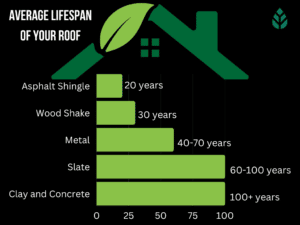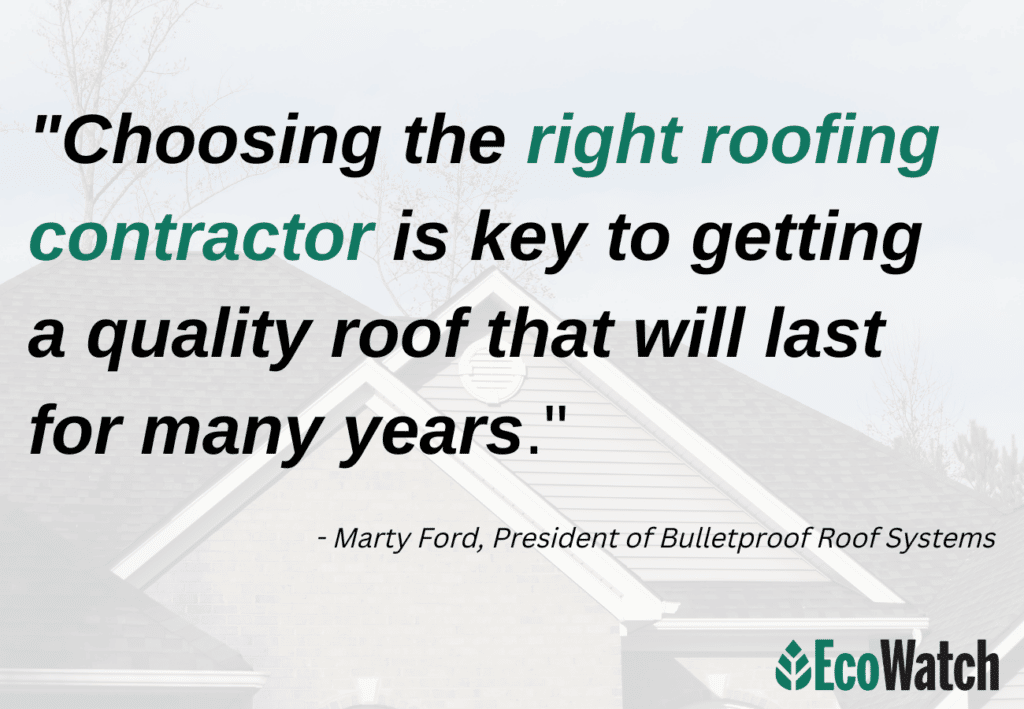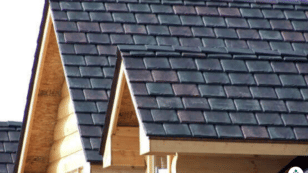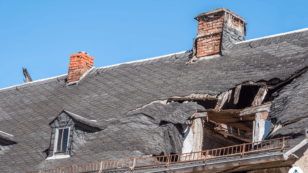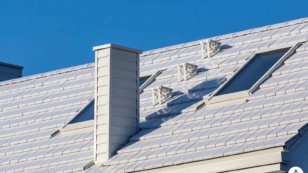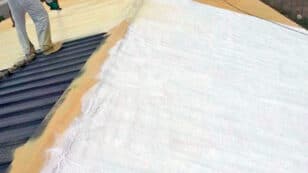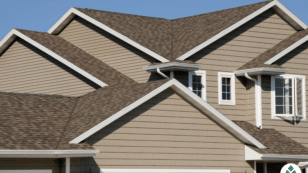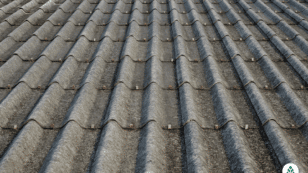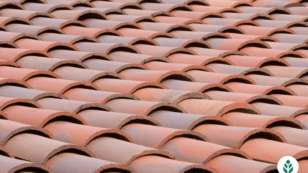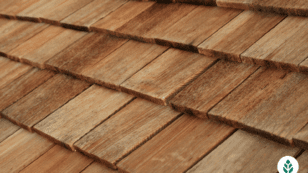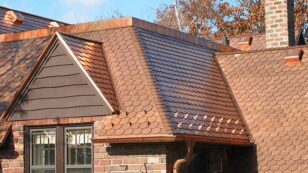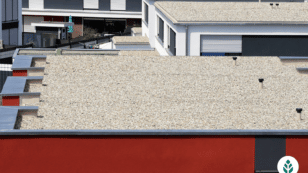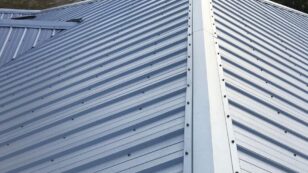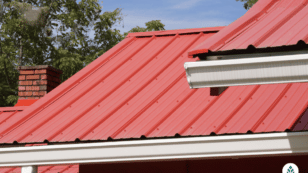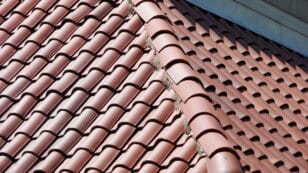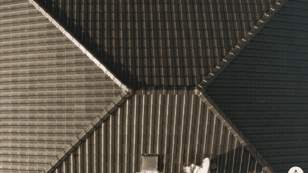
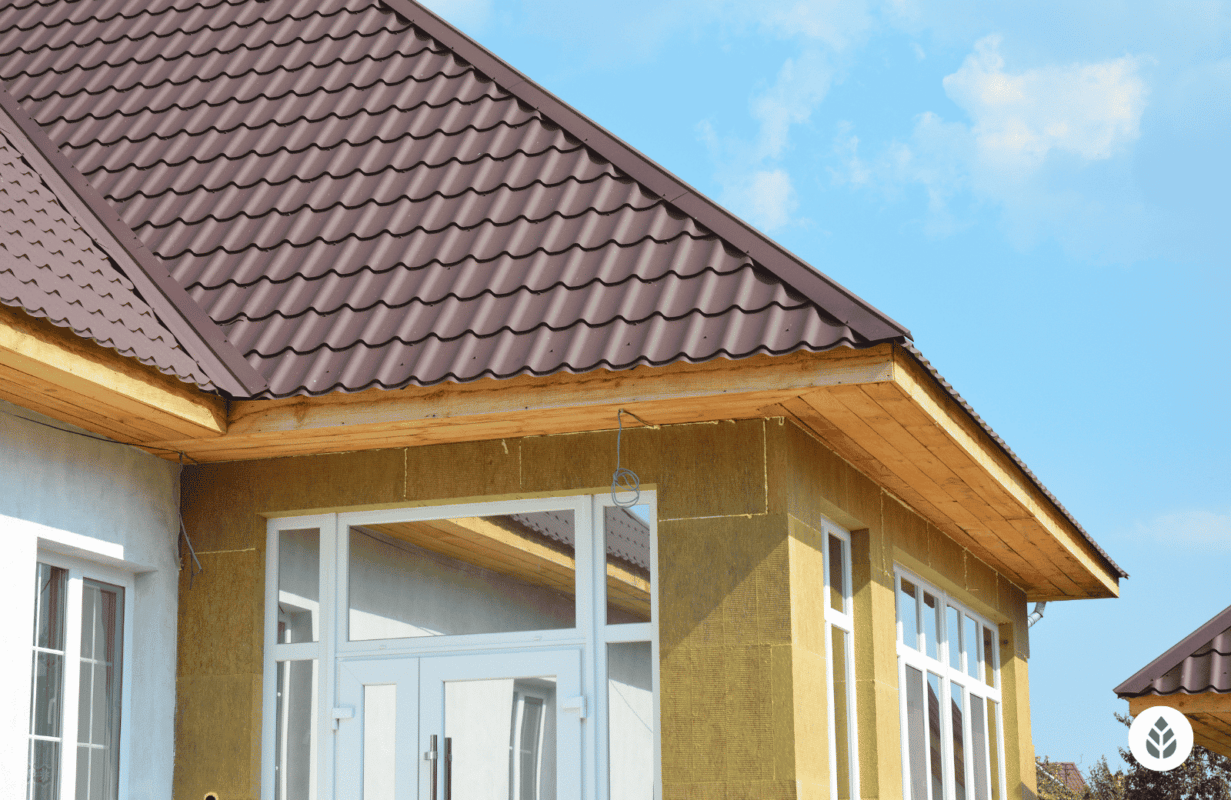
How Long Does a Roof Last? (2024 Homeowners Guide)
Choosing the right roofing material for your location and the right roofer for the job is crucial to getting the most out of your roofing investment.
Each product and or company featured here has been independently selected by the writer. You can learn more about our review methodology here. If you make a purchase using the links included, we may earn commission.
Once a new roof is installed, you likely have between 25 and 50 years before you’ll need to have your roof replaced.
We understand that 25 years is a pretty wide range, so you might be wondering, “Well, how long will my roof last?”
The life expectancy of a roof depends on many different factors, including the type of roofing material you choose, the weather conditions you experience, and — according to one roofing expert — who installs your roof.
“Choosing the right roofing contractor is key to getting a quality roof that will last for many years,” Marty Ford, President of Bulletproof Roof Systems, told EcoWatch.
Roof Expectancy Based On Material
Some roofing materials are simply more durable than others, which is one reason some roofs last longer than others.
For instance, asphalt shingle roofs are lightweight, so shingles tend to blow off in high winds. Asphalt is also susceptible to roof mold and mildew. Comparatively, clay tile roofs are much sturdier, likely to remain in place during a storm and are less vulnerable to roof rot.
The table below compares different roofing materials based on lifespan and cost.
Roof Material |
Estimated Lifespan Range |
Cost |
| Asphalt Shingle | 10 to 30 years | $ |
| 25 to 40 years | $$ | |
| Metal Roofing | 40 to 75 years | $$ |
| 50 to 100+ years | $$$ | |
| Slate Roofing | 60 to 100+ years | $$$$ |
| Solar Shingles / Solar Glass | 25 to 30 years | $$$$ |
Our Favorite Roofing Contractors
If you’d like to skip the reading and talk to a trusted roofer, get connected to one of our favorite roofing companies in your area by clicking on the links below.

Power Home

Average cost
Pros
- Positive industry reputation
- Lifetime or lengthy warranty
- 10+ years of experience
- Positive customer reviews
- Uses eco-friendly materials
- Well-trained, certified installers
- Variety of roofing styles available
Cons
- Limited variety of roofing materials
- Short or nonexistent warranty
- No financing information available
- Expensive
- Little information available on company website

Erie Home

Zero Down - 18 months same as cash with minimum monthly payment
Average cost
Pros
- Lifetime or lengthy warranty
- Widespread availability
- 10+ years of experience
- Positive customer reviews
- Uses eco-friendly materials
- Financing options available
- Well-trained, certified installers
- Uses durable materials meant to last
- Variety of roofing styles available
Cons
- Limited variety of roofing materials
- Expensive

Aspen Contracting

Average cost
Pros
- Positive industry reputation
- Lifetime or lengthy warranty
- Widespread availability
- 10+ years of experience
- Positive customer reviews
- Financing options available
Cons
- Little information available on company website
Top 7 Factors That Impact Your Roof’s Lifespan
The average lifespan of a roof is between 25 and 50 years, but the lifespan of your roof may be longer or shorter depending on these top seven factors.
- Type of material
- Quality of material
- Weather conditions where your home is
- Frequency of roof maintenance and cleaning
- Slope of your roof
- Quality of Installation
- Underlayment and insulation
Type of Material
Every roofing material has an average life span. Cheap asphalt roofs may only last 10 years, while most metal roofs can last 75 or even up to 100 years if you’re choosing a long-lasting material like copper.
If you’re interested in a wood roof, wood shingles may be more affordable, but wood shakes are thicker and more textured, making them more durable and long-lasting.
Quality of Material
Even if you’re set on one type of roofing material, you’ll still have options when it comes to quality. Let’s look at some examples:
- Asphalt roof: You can choose between 3-tab shingles, architectural shingles and luxury shingles. Three-tab shingles are cheap and may only last 10 to 15 years, while architectural and luxury shingles are typically made of thicker asphalt and more fiberglass granules, making them a more durable and longer-lasting option — up to 30 years.
- Wood roof: Wood shingles are more affordable, but only last between 25 and 30 years. Comparatively, wood shakes are thicker and more durable than wood shingles, lasting 35 to 40 years or, in the case of a cedar shake roof, up to 50 years if properly maintained.
- Metal roof: You can choose between many different types of shingles made of various metals, or standing seam or corrugated metal roofing options. Your roof’s longevity will correlate with the type of metal roof you choose and how well it performs in your climate, with aluminum having the shortest lifespan (35 to 40 years) and zinc and copper lasting upwards of 100 years.
It’s important to hire a trustworthy roofing contractor that uses high-quality materials if you want a roof that’s going to last longer than the minimum 10 to 15 years.
Weather Elements
No surprise here: you’ll want to install a roofing material that’s appropriate for the weather it will face. Consider the extreme weather conditions that your roof and the rest of the structure of your home may experience.
“It is important to understand that the condition of the structure impacts the life expectancy and performance of the roof. For example, installing a 120 mph roof system on a home that starts to structurally move under 100 mph winds jeopardizes the roof performance,” advises Todd Miller, President of Isaiah Industries.
If you live in an area prone to high winds and strong storms, like Florida, you may not want to install an asphalt roof (unless you like the appearance of missing shingles).
Strong UV rays from the sun can heavily wear certain roofing materials, leading to discoloration, deterioration and a shortened roof lifespan, as well as decreased home energy efficiency.
For residents of northern regions, snow build-up and ice dams can also lead to water damage and roof rot.
Roof Maintenance and Cleaning
Regular maintenance and cleaning is crucial to extending the longevity of your roof.
“It is important to have a professional roofing contractor inspect your roof at least once a year,” Oberon Copeland, CEO of Very Informed, told EcoWatch. “This will allow them to catch any potential problems early on, before they have a chance to cause significant damage.”
You may need to have your roof maintained more often if you live in an area that sees a lot of severe weather.
“Be sure to keep an eye out for any missing or damaged shingles, as this could also lead to water damage if left unaddressed,” Copeland said.
Roof maintenance costs may be covered if you have your roof inspected during your warranty period, or if the repair is due to workmanship error during installation.
Roof cleaning isn’t just about keeping up curb appeal. Roof moss and algae growth can lead to severe property damage. You should clean your roof at least once a year to improve its lifespan.
There are some DIY roof cleaning methods, but make sure you’re not using a tool that may damage your roofing materials. For example, pressure washers are typically too strong for asphalt shingles.
Slope of Your Roof
The slope and pitch of your roof will impact how well water flows off of it. If you have a flat roof or a low slant, you’ll need to inspect it after periods of heavy rain to make sure there isn’t any water pooling.
Likewise, if your roof has a lot of eaves and crevices where water could pool, roof flashing could help protect your roof and your home from water damage.
While talking about roof slope and water damage, we may as well acknowledge the important role gutters play in extending your roof’s lifespan.
“It is important to clean your gutters on a regular basis, as clogged gutters can lead to water damage on your roof,” Oberon Copeland told EcoWatch.
Consider installing gutter guards to keep debris out and extend the longevity of your gutters and roof.
Quality of Installation
“Many people don’t know roofing can be hazardous for homeowners if not done correctly,” David Snyder, CEO of Nova Home Buyers LLC told EcoWatch.
Picking a roofing company without doing any research puts you at risk of an improper roof installation and a roof that won’t last very long. Saving some bucks up front with a cheap or DIY roofing installation can lead to costly roofing repairs and replacements.
Snyder recommends finding a roofing contractor that is able to show you proof of license and insurance, warning that there are too many “risky” roofing companies out there.
If you’re not sure where to start, the EcoWatch Reviews team has vetted the top five best roofing companies in this guide.
Underlayment, Insulation & Ventilation
Many homeowners are so focused on choosing between asphalt, metal or slate tiles that they forget about a crucial roofing material: the underlayment.
Roofing underlayment is what keeps you and your home dry in the event your roof gets damaged. It’s also a layer of protection against moisture and mold.
Having a properly insulated home will also help your roof contain heat, preventing ice dams and keeping your home warm in the winter. This goes hand in hand with ventilation, which allows moisture to escape and protects the heat level of your shingles, reducing risk of damage and keeping your home cooler in the summer.
6 Signs Your Roof Needs to Be Replaced
We all dread the day we have to replace the roof, but ignoring the signs that your roof needs to be replaced only puts those living in the house at risk. You’re probably in need of a roof replacement if:
- You have frequent roof leaks
- Your roof is old
- There’s moss or mold buildup
- There are signs of rotting
- There’s significant damage
- You have costly energy bills
Speaking of costly energy bills — if you’ve ever considered going solar, it’s best to install solar panels along with your roof replacement. If installed together, your solar panels and your roof will likely age out around the same time, which will save you a lot of money in the long run.
What Should Be Included In Your Roofing Warranty?
Roofing expert Todd Miller told EcoWatch that when homeowners buy a roof, they typically get two warranties: “One from the manufacturer covering the product integrity and the other from their local contractor covering the installation workmanship,” Miller explained.
Typically with a manufacturer warranty, you’ll need to register the warranty at the time of installation for it to be effective. A standard roofing warranty comes with 10 years of coverage, with some offering “lifetime” warranties (referring to the lifetime of your roofing material).
A workmanship warranty ensures that your roofer will install your roof correctly or they’ll be coming back to fix it at no cost to you. Workmanship warranties vary by contractor, lasting two, 10, or 25 years — with some companies offering lifetime coverage.
Schedule a Roof Inspection and get a Free Quote Today
If you want your roof to live a good and healthy life and avoid costly repairs and replacements, you need to have it inspected and maintained regularly. Plus, keeping up with roof repairs and maintenance is also often a stipulation for your warranty to remain valid, which can save you money on roofing costs.
We know how difficult it can be to find a trustworthy roofing contractor, and unfortunately the horror stories are all too common. Click one of the links below to get connected to a trusted roofing company that’s been vetted by the EcoWatch reviews team.

 233k
233k  41k
41k  Subscribe
Subscribe 
